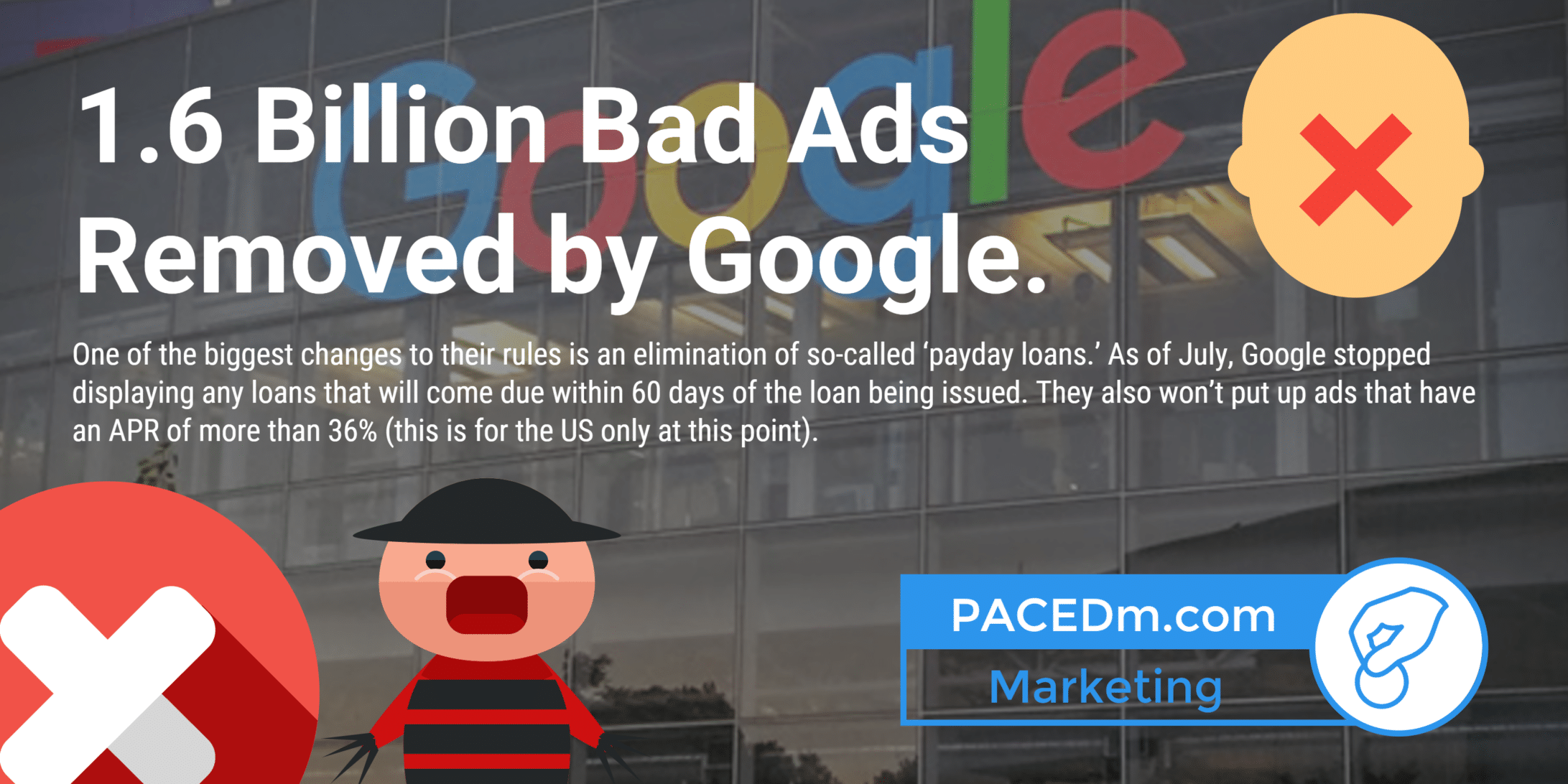Google has announced that over the course of 2016 they have removed approximately 1.7 billion advertisements from its site, which is more than double what they removed in 2015. These ads are considered bad for a variety of reasons such as being deceptive, predatory offers, misconduct of some type, and more.
Most of the removals were done automatically through the systems that Google puts in place. They have updated these systems to crack down more on ads that they feel should not be displayed on their properties or through their ad networks.
One of the biggest changes to their rules is an elimination of so-called ‘payday loans.’ As of July, Google stopped displaying any loans that will come due within 60 days of the loan being issued. They also won’t put up ads that have an APR of more than 36% (this is for the US only at this point).
Illegal pharmaceuticals also made up a large portion of the ads that were removed. In 2015 they took down 12 million ads in this category, but in 2016 that number shot up to 68 million. Illegal gambling ads made up another 17 million of the removed ads.
Not surprisingly, fake news ads were a big problem, likely more in the later part of the year. 7 million ads that were specifically trying to work around the fake news rules were removed last year alone.
Scott Spencer is Google’s director of product management, sustainable ads. He commented that, “Ultimately bad ads pose a threat to users, Google partners and the sustainability of the open web itself.”
For Google and all the other major ad companies, this is going to be a long-term battle. Automated systems will be updated, and those who want to display bad ads will adapt. It is encouraging to see that Google is taking this issue seriously and trying to push back.




